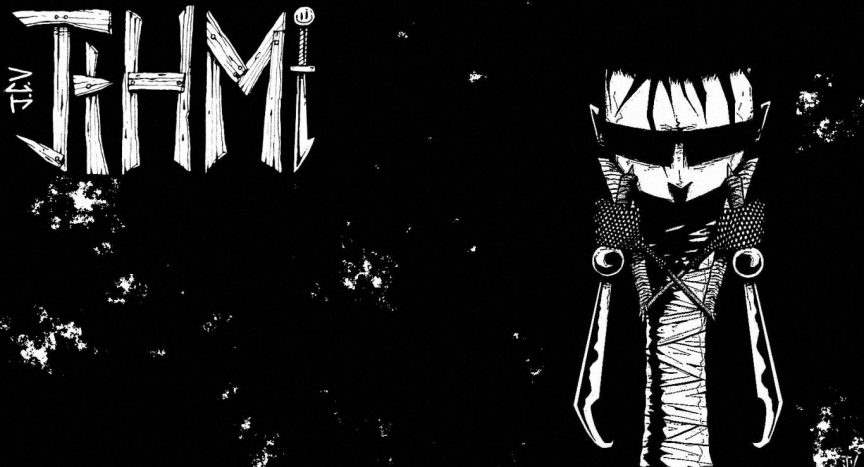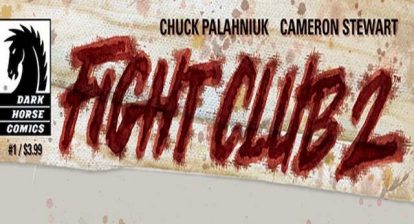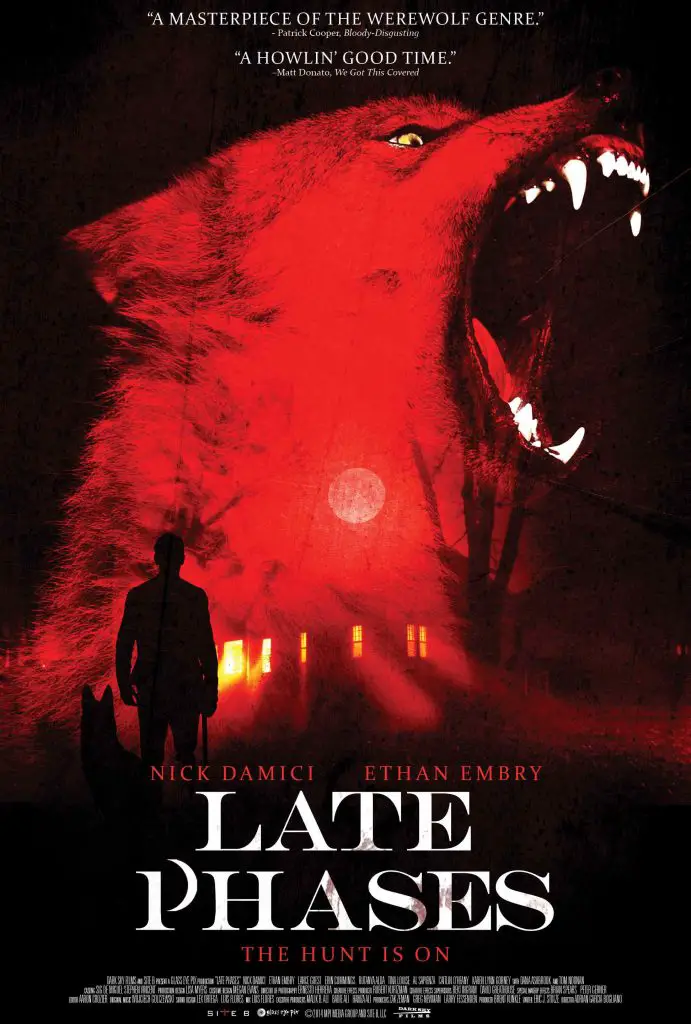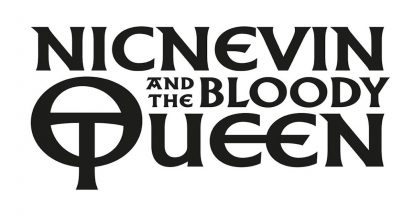True story: Right before my freshman year of high school, my mom offered to buy me something nice to commemorate the occasion. She offered me a new backpack from Coach (cause that was a thing), a hair straightener to fulfill my emo-fringe fantasies, designer brand makeup, and just anything girly and outrageously priced you could think of.
But what did I want? A single issue of a comic called Johnny the Homicidal Maniac. A bloody, rage-filled, nonsensical comic book following the exploits of a homicidal maniac with a penchant for pessimistic rants and show tunes. Safe to say my mother flat out refused that request, and I spent my first week of high school with fried hair.
But that’s what growing up is all about: buying and experiencing all the things your parents kept from you to “preserve your innocence” (come on, if you grew up anywhere near an Internet connection all that went up in flames with a single Google search). I’m in my early twenties now with the entire comic series sitting on a bookshelf in my living room. I flip through the pages every once in a while and trip on nostalgic memories; Johnny stumbling through his kid neighbor’s window covered in brain matter and blood, the hilarious and half-crazed ramblings of the doughboys, and the desecration of a ‘Taco Hell’ to new-wave goth metal.
Overview of the Madness
As the name implies, Johnny the Homicidal Maniac follows the life of a deranged serial killer in his quest for peace of mind, personal growth, and Cherry Brainfreezies. The series focuses on Johnny, Nny for short, his kid neighbor Todd, and Nny’s numerous supernatural ‘voices’ Nailbunny and the Doughboys, Mr. Eff and D-boy (who may or may not be parodies of a certain canned-biscuit mascot). While Nny’s string of violent murders entrances the series with dark humor, it’s his interactions with these voices and other characters that drive the comic. JTHM is a dark, disturbing comedy with all the trappings for a philosophical thought piece. As Nny rips the brain out of a pedophile’s cranium, he muses on the inherent dangers of innocence. While electrocuting a pair of rude ‘talkers,’ he comments on the evils of social-idleness and passivity in the world. And, my personal favorite, when confronted by a fan/imitator of his work Nny murders this groupie via vivisection and his personal philosophy on self-hatred.
Accompanying the insane antics of Nny are Vasquez’s numerous ‘filler strips.’ These strips take place in the same setting as JTHM and often reference one another throughout the series. While not as violent and gruesome as JTHM, the filler strips are just as humorous, deranged, and disgusting. “Happy Noodle Boy,” one of the first filler strips presented in the series, is a comic within a comic. As Johnny’s personal creation, Vasquez parodies his own comic series and perception as a writer. Happy Noodle Boy, much like Johnny, is a violent, screaming mess with little rhyme or reason to the outside world. “Happy Noodle Boy,” then can be seen as Vasquez’s attempt to satirize his own creation within that creation itself. Vasquez’s meta-writing is also employed in “Wobbly-Headed Boy,” a strip about an adorable, megalomanic bear. Wobbly-Headed Boy, much like Nny, seeks to destroy the happiness of lesser animals. However, this goal leaves him alone and depressed for the entirety of the series. These two filler strips, while occurring in an alternate setting to JTHM, reinforce Vasquez’s satirical and metaphorical approach to his own writings.
The other strips, “Public Service Announcement,” “Anne Gwish,” “Meanwhile…,” and “True Tales of Human Drama” all occur within in the same setting as JTHM but underscore the filth and degradation of society. These strips still engage in Vasquez meta-writing but showcase the humor of JTHM to a higher degree. They play with not only the grosser side of the comic’s humor but a darker side as well. One of my personal favorites features a young girl being hoisted and beaten up like a pinata by actual pinatas as revenge. However; the most infamous of these strips is a gem from“Meanwhile,” features a couple on their first date. Adorable, right? Well, it would’ve been if the guy didn’t have explosive diarrhea. At the table.
Before we dive deep into the complexities and history of Johhny the Homicidal Maniac, we need some background on the creator Jhonen Vasquez. Vasquez, born and raised in California, began doodling at a very early age. These doodles soon became a regular comic strip in his school newspaper at Mt. Pleasant High School. Titled Johnny the Little Homicidal Maniac, Vasquez authored and illustrated dozens of disturbingly cute (okay, mostly disturbing) precursor comics to his flagship series. As the name suggests, Johnny the Little Homicidal Maniac followed young Johnny’s murderous tendencies. Whether the strip was popular amongst his fellow peers is unknown. However, the school gave Vasquez complete creative control over his dubious content. It’s with this freedom that Vasquez would also create the titular character and comic strip Happy Noodle Boy. Noodle Boy can be described as the antithesis of reason and purpose. Unlike Johnny the Little Homicidal Maniac, Happy Noodle Boy encapsulated stream of conscious ramblings with an angsty teen’s twisted and erratic sense of humor. Despite the strangeness, his early comics honed Vasquez’s love of comic illustration. These early works established the framework for Vasquez’s later comics: Absurdly dark humor, graphic cartoon violence, and satirical undertones beneath idle suburbia.

Vasquez later attended De Anza College at Cupertino, California in 1992. However, Vaquez wouldn’t pursue his college career very long. Rather, Vasquez pursued a career in cartoon illustration outside of formal schooling. It would take three more years and a visit to Alternative Press Expo before Vasquez familiarized himself with Slave Labour Graphics (SLG). SLG is a publishing house known for eccentric and obscure titles. With their love of the weird and independent, Vasquez’s unique style and comic narration fit right into the SLG brand. In 1995, after just meeting and viewing Vasquez’s samples, SLG began publishing the first issue of Johnny the Homicidal Maniac.
Art and Themes
The appeal of JTHM lies not only in the series’ heavy gore and dark humor, but its unique style. Vasquez was deeply inspired by the original Teenage Mutant Ninja Turtles comics released in 1984 at the height of the black-and-white comic boom. He recalled the grungy, black and white comics as “dirty, imperfect” and atmospheric. Vasquez replicated this grimy atmosphere through harsh linework and highly geometric character design. The geometry of his characters are further highlighted by their outrageous proportions. Characters are often rail-thin, almost stick figure like, to augment the unnaturalness of the series. Their heads, hands, and feet, however, are massive in comparison to express a huge range of cartoony emotions.

This harsh linework and sharp geometry are also replicated in the panel borders and speech bubbles. Vasquez ensured that the dark atmosphere wasn’t just conveyed by the character art, but the whole of the comic as well. Jagged panel art and thick lines create a crowded, nearly claustrophobic page. The characters, then, seem to fight not only themselves and the harsh world they live in, but the very confines of their creation. Of course, Vasquez’s detailed border art also plays up his meta-writing and humor. JTHM was often seen as an edgy, dark comic with little substance beyond that. But Vasquez would often use messages within the borders to break the fourth wall, a sort of nod to the audience at the absurdity of Nny’s antics. These messages and the borders by extension propel the dark humor of Vasquez’s work.
Satire and Culture
Prevalent throughout JTHM, other than the insane amounts of blood, gore, and dismemberment, is the series’ social commentary. The series’ take on capitalism and consumerism is one of the most recognizable. Images and billboards of happy people buying frivolous things offset an atmosphere of a decaying world in the clutches of capitalism. This theme persists throughout all of Vasquez’s work. As an example, in both JTHM and Invader Zim the main characters find themselves hellbent on accomplishing a horrifying goal to only be sidetracked by a grossly humorous cartoon. Just like the rest of society, Nny and Zim become enslaved by media and are thus kept away from their true potential. This potential may be murder and genocide, but the point stands.
Accompanying these themes of capitalism and consumerism is isolation. Nny, if you can’t tell, is an utterly lonely character. He has no real friends, and any attempt he makes to engage with the outside world ends in murder. Nny’s interactions with Devi D., a young artist whom he dates briefly, ends in a failed murder attempt. Nny wants to “immortalize the moment” or the feelings he has for Devi, but he totally incapable of understanding others or himself. Squee, Nny’s next door neighbor, is also an utterly lonely character. He shares many similarities with Nny, like speaking with inanimate objects and anxiety towards new things. Squee, then could be a cautionary tale: Look after your kids or they’ll become raving lunatics with a slaughterhouse in their basement.
Gothic culture and subculture are also heavily satirized in JTHM. Nny interacts with (and kills) a number of goth stereotypes throughout the series. They are often depicted as wholly invested in their self-image and their uniqueness from other groups of people. This uniqueness, however, turns to replication within the goth culture. The filler-strip “Anne Gwish” is the most prominent example of this satirization. The strip follows Anne Gwish, a young goth girl who only wants to be misunderstood, invited places to begrudgingly go, and uniquely herself if other people are watching. Like any goth, Anne loves boys in all bands and making fun of people who don’t dress exactly like her. Vasquez often cites Anne as his most “attractive character” only for the fact that he needed some aspect of her to be remotely appealing to readers.
Legacy and Spin-Offs
His flagship series, Johnny the Homicidal Maniac (JTHM), a recreation of the comic strips Vasquez created in high school, ran from August 1995 to January 1997. Racking up only 7 issues in total, the series left a deep imprint on SLG. As one of the publisher’s most successful comic series, JTHM was a feat in independent publishing. Though official sales for the comic series are not available, Vasquez was able to live solely off the royalties. Along with the success of JTHM, Vasquez also created two spin-off comics and the immensely popular Invader Zim cartoon.

Vasquez’s comic series Squee! Featured Nny’s next door neighbor, Squee, as the main character. Though Slave Labour Graphics only published four issues between 1997 and 1998, Squee! caught the attention of Nickelodeon. Producer Marry Harrington found the overall design of Squee marketable to young teens and asked Vasquez for a show pitch. The result was Invader Zim, a cartoon about an inept alien invader hell-bent on planetary domination. Though the series was imbued with the same dark humor and satirical fire as JTHM, Invader Zim wasn’t as gory, horrific, or violent as JTHM. The series ran for two seasons but was ultimately canceled due to poor ratings. But the Invader Zim fandom was insanely strong. A cult following around the TV series persisted well past the show’s cancellation in 2002. After years of demand and urging from the creator, Nickelodeon green-lit an Invader Zim movie to be released the Summer of 2019 on Netflix.
Despite JTHM being a short-lived installment for Slave Labour graphics, the effect on culture is evident. This independent comic from Vasquez’s high school years propelled his career in animation. Without the creation of Johnny the Homicidal Maniac Vasquez would’ve never created Squee! and, in turn, Invader Zim would’ve never been picked up by Nickelodeon. And without JTHM, I would’ve never begun seeking out horror-driven, gore centric comics. Amazing titles like Nailbiter, Outcast, and Sons of the Devil would’ve never been a part of my comic collection today. From the art to the humor to the gripping monologues on human degradation and mooses, JTHM is my favorite comic books to this day. And after some digging at your local comic stores, it can find a place on your shelves too.





